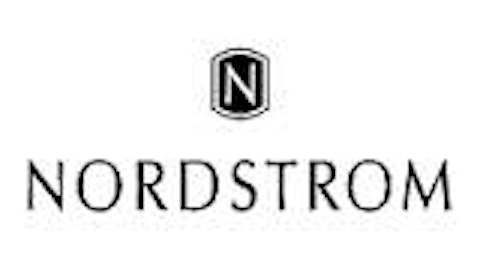When analyzing a company’s growth potential, one of the key things to consider is its industrial growth. The department store market is expected to grow by 21.7% between 2011 and 2015. Operating in a business-to-consumer environment, these stores have a direct impact on human lives. Department store growth is fueled by consumers’ increasing needs. These stores are also compelled to modify their operations to increase the speed and convenience with which they can deliver goods to the consumers. Here are three retail companies grappling with how to address the changing needs of their customers.

A company seeking turnaround
The company’s merchandise includes diverse apparel and footwear options. These products require a stationary area where salespeople can remove hangers, fold apparel and properly pack products. Such an area is not available with mobile checkout as it was when there were cash registers. The mobile checkout devices were also prone to regular failure, adding to customers’ frustration.
J.C. Penney Company, Inc. (NYSE:JCP) had a loss of $985 million in the 2012 fiscal year. Its revenue was $13 billion, down 25% year-over-year. This revenue is expected to decline further, sliding to $12.37 billion in 2013.
The home goods segment, which includes bedding, cookware and furniture exclusively designed by expert architects and designers, is a key revenue driver for J.C. Penney Company, Inc. (NYSE:JCP). This segment contributed 15% of the company’s $17.3 billion revenue in fiscal year 2011, but decreased to $1.56 billion in 2012 from $2.6 billion in 2011. In June 2013, the company launched a new home goods section in 505 of its total 1100 stores. Analysts believe that the customers will like the appeal of the products. The company is banking on its home goods section to bring a turnaround in its fortunes. Sales per average square foot in the company’s stores were $28 in the first-quarter of 2013. As a result of this initiative, the sales per average square foot are expected to increase to $35 in the fourth quarter of 2013.
A retailer banking on e-commerce
Market research firm Forrester has predicted that e-commerce is likely to generate $262 billion in sales for US retailers in 2013, up 13% from 2012. In order to tap into this growing market, Macy’s, Inc. (NYSE:M) is using the omni-channel strategy. This strategy helps consumers to use online and mobile shopping channels simultaneously. The company had 292 such omni-channel stores out of its 840 stores in 2012. It expects to increase the number of such stores to 500 by 2013, focusing primarily on e-commerce growth. Macy’s, Inc. (NYSE:M) expects its same-store sales to grow at about 3.5% year-over-year in 2013.
The expected free cash flow generation for Macy’s, Inc. (NYSE:M) is $1.35 billion and $1.58 billion, in 2013 and 2014 respectively. This robust cash flow is allowing the company to aggressively pursue its share buyback program. It repurchased shares worth $360 million in the first quarter of 2013, and has increased its share buyback authorization by $1.5 billion. Macy’s, Inc. (NYSE:M) expects to complete its planned buyback by 2015. A total of $2.6 billion of share buyback was outstanding at the end of first quarter of 2013; the company expects a share repurchase of $1.2 billion each in 2013 and 2014.
This free cash flow generation is also allowing Macy’s, Inc. (NYSE:M) to attract income investors. The company announced a 25% quarter-over-quarter increase in the quarterly dividend rate in the first quarter of 2013. Macy’s, Inc. (NYSE:M) increased the quarterly dividend to $0.25 per share, up from $0.20 per share in the previous quarter. This is the third dividend increase in the past two years.




